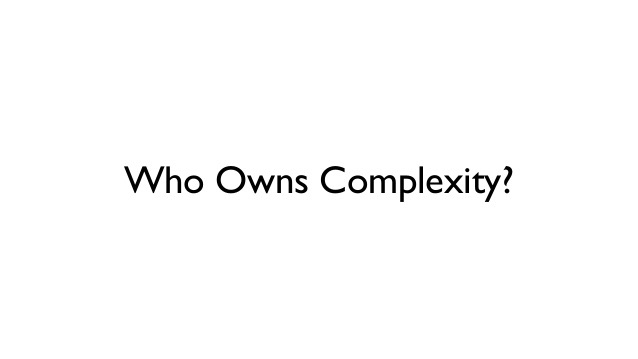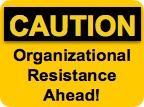Author: Occam's Edge
Exceptional Leadership
Being an exceptional leader requires
- Being genuine (aka authentic)
- Being both self-aware and aware of the challenges of those who report to you will allow you to lead with empathy
- Communicating with directness and honesty, especially in the difficult issues and tough decisions
- Being a great listener and taking time to tell people what they “need” to hear versus what they “want” to hear
- It’s not about your success but about making others achieve their potential. If you do that, you’ll be incredibly successful

Leadership

Becoming a leader requires . . .
- Sound skills and desire for continuous learning
- Knowing what motivates you
- People who care to help you along the way
- Be prepared to get knocked down, pick yourself up with grace and try again….and again, and not give up
- Let who you are shine through
Listen to our very own Valli Perera discuss Authentic and Empathetic Leadership. Our first Podcast with new content, new medium, and new conversations.
When do you become a leader?
We feel fortunate to have met, and worked with, some truly great leaders. We have also worked with some leaders who were not that great and we have also worked with people who definitely should have been in leadership roles, but were not.

We hope that we are good leaders but we know that we are continually working on it!
So the question we are asking is, when do you become a leader?
Leadership cannot be assumed because of title, the number of people reporting to you, or just because you think you are a leader. Just because you were promoted, it doesn’t automatically make you a leader.
At Occam’s Edge we believe that leadership is based on behavior driven by values.
Being a leader isn’t a matter of title or position. It is much more about how you treat others and how you engage with them. Therefore, the art of becoming a leader is to look at and examine your behaviors and values.
From our experiences and recent research we have identified five key behaviors that all leaders should develop and demonstrate.
Authenticity and Empathy
Good leaders ensure their words and actions are consistent with their values and beliefs. They are good listeners, communicators, and treat people with kindness and respect.
Being authentic is not just about happy conversations. Good leaders are also adept at being candid and delivering the tough messages with directness. They are also comfortable admitting they were wrong or unfair. They understand the power of ‘I’m sorry’ when they’ve made a mistake.
When in the company of authentic leaders you can feel their motivation and desire to be genuine. You can see that they are trying to do the right thing. It’s very obvious. Vice versa, when you feel that someone is trying to pull ‘the wool over your eyes’ that’s obvious too.
Communicating and connecting
Being able to communicate and connect with people is a key behavior of good leaders. They focus on getting to know individual team members on both a personal and professional level. They are genuinely interested in your well being and will seek to understand your strengths and weaknesses, your goals & ambitions. Good leaders simply care about your success.
Good leaders set direction and provide the guidance for others to succeed. Once the direction is set and if new facts or information come to light they are quick to adapt. They not only communicate the necessary changes but they also explain the reasons behind the change in direction.
Good communicators take time to listen, really listen and respond.
Handling tough conversations
Typically we see the tough conversations fall by the wayside people are either ill equipped to navigate or more importantly they just think the problem will go away.
After all, who likes to have an uncomfortable conversation?
However strong leaders know how to have the uncomfortable conversations openly and directly. They are skilled at managing conflict. They show up prepared to bubble up the tough issues and be the facilitator who allows the discussion and debate to take place so that teams can come to agreement and alignment.
They are adept at facilitating in a positive and non judgmental manner.
Trust
Leading a team requires a sense of shared understanding and mutual trust. Good leaders develop teams that are made up of people who mutually respect and trust each other.
Leaders spend time to connect with their teams, develop a shared understanding, and through working together develop trust.
This is done in good times and in bad with equal measure.
Remember that trust is earned not given, but once it’s earned it’s priceless.
Talent development
Good leaders develop talent. They are always focused on your personal and professional growth. They teach their team members in two ways.
First they model the behaviors they want their staff to demonstrate. As human beings we copy or mimic positive behaviors that we want to emulate. We do this almost subconsciously. Good leaders walk the talk and practice what they preach.
Second good leaders don’t just tell you to go do something, they show you what they need, why they need it, and how they’d like to see it. Yet they’re open to alternatives. They are your coach, your mentor, and your cheerleader. They help you become a more collaborative, capable individual who understands how to make choices, decisions and influence outcomes.
As opposed to simply barking orders at team members, great leaders look for teachable moments and use those moments to help develop others around them.
They understand that the guidance people actually need is often not what they want to hear. Telling people what they want to hear is easy. Great leaders help people unpack what they need and take time to be aware of their challenges
Conclusion
Whilst there are many behaviors that drive good leadership you can start with our top five or select your own. Either way we think you will be glad to see how you and the people around you evolve as you continue on your leadership journey.
Why did we pick these five? Because we think they make you a good person too.
We’d love to hear from you? Do these behaviors resonate with you? What other behaviors and values would be in your top five?
Choices versus Decisions

Choices and decisions are very often thought to be synonymous. Purposefully thinking through the distinct differences of each will ultimately lend itself to building more effective teamwork, leadership skills and result in better outcomes.
Let’s start with the formal definitions of each:
Choice – the right, power, or opportunity to choose
Decision – the act of or need for making up one’s mind
Since choices are linked to attributes that are personally empowering the result is that, to some extent, choices are made based on our emotional thought process. Decisions, by the nature of the definition, are mostly made based on situational analyses and facts. Let’s put this into the context of leaders and leadership. Leadership requires that leaders will make decisions and then communicate those decisions to their teams for execution. Such actions include, hiring, firing, strategies, acquisitions, dispositions, just to name a few. The list is endless. They do however, have one thing in common and that is that decisions are a process of analyses that end in an action or actions. In the current time of the COVID-19 crisis there are exponentially more decisions and some of them drastic and painful.
Let’s press pause. What would happen if we approached leadership decision making process with the lens of “Choices”, that is with the lens of leaders “having the right, power and opportunity to choose”?
In reality we make choices based on our core beliefs, our values, the stated mission and our cultural mindset and norms. It is a mindset approach. Choice is what you aspire to be, what you aspire to achieve, both for yourself and for others and for the organization as a whole and for the stakeholders and community which are impacted by organizational actions and decisions. Making decisions starting with considering the choices you have, the impact of those choices and then taking action in a decision leads to a more impactful well thought through leadership action which generally will result in outcomes, however painful in the short term, that can be embraced and supported by all whom are impacted.
The takeaway: Almost all decisions are made with the short term in mind. Choices on the other hand take longer to think through, gather input and assess. In tough times good leaders agonize over tough choices and ultimately this results in decisions focused on the longer term. This commitment becomes visibly apparent to everyone and will pull people together to support and achieve a common goal. Decisions are what get us through tomorrow, but decisions made through the consideration of choices are what that will get us through the day after and the day after that.

Modern management theory teaches us to create leadership positions with accountability for a broad scope of operations. Basically, a hierarchy shaped like a pyramid with defined spans of control. “Successful” leaders are generally found to grow their scope of authority through internal and external advancement, growth of their business enterprise, both organic and through M&A. During this time their day to day becomes more complex. They have more touch points with subordinates, peers, senior leaders and external stakeholders. There are more moving pieces to manage, more issues to resolve, and more solutions to implement. Change is inevitable: market changes, customer needs change, and employee needs change. In addition, special projects, industry events, networking, and planning & reporting activities all draw on a leaders ability to be successful.
Soon enough many reach burnout and stay in a position where they are ineffective. This has, since 1968, been referred to as “The Peter Principle”, an observation made by the Canadian educational scholar and sociologist, Dr. Laurence J. Peter, whereby employees are often promoted to their level of incompetency.
Complexity places pressure on three critical resources; time, energy, and capability. Time is finite for all of us and however much we attempt to do more with less there are only 24 hours in a day! Energy and capability differ from individual to individual but eventually it all catches up to us.
What complexity does is prevent you from doing what good leaders should be doing. Leading through influence and trust, mentoring and developing teams and planning for the future both from a business and talent perspective. Good leaders don’t just get results, they develop the next generation of leadership.
Complexity and leadership is partially what drives culture and behavior in your organization. Your words, actions, and behaviors show people what it’s really like to work at your organization. They show people who you really are, how to interact with you, and they mimic your behaviors.
The other impact is on the overall wellness of the leader, their direct reports, and their personal life. Complexity in the work place, being present with family, having ‘me’ time all draw down on the time, energy, and capability. This often leads to inner feelings of not being good enough, imposter syndrome, and lower self worth. Subordinates and family can become resentful, mistrusting, and resigned to your way of being. Resignations of staff, divorce, and estrangement are not uncommon and can often be attributed to an over aggressive work ethic caused by complexity.
For sure, there are hundreds of great leaders business across the globe, but there are thousands of mediocre ones and millions of future leaders.
Take a moment to think about the level of complexity that you deal with on a day to day basis and the impact it has on your being. In fact, I encourage you to take 30 minutes after reading this to ask yourself the following questions:
- How many meetings do you attend a day?
- Which of those meetings are really effective?
- How much time do you spend informing others on status?
- How would you describe your listening style, how would others describe it?
- How much time did you spend yesterday on developing others?
- When did you last spend time thinking and reflecting on your day?
- How much time do you spend thinking about the future of the business?
- Do you know who is looking for a job in your span of control?
- How do you personally define success?
- Where are you in that journey towards success?
- What of all of your daily actions make you feel energized and fulfilled versus drained and discouraged?
Be honest with yourself. Write down your first thought, don’t over think it. When you look at your answers some things will become clear to you. Reflect on all your answers but pay particular attention to those answers which might require more consideration.
We’d love to hear from you. How much complexity is there in your organization and how does it impact you as a leader or as a future leader? For the courageous, send us the answers to your questions and we would be more than happy to be a sounding board for your reflections.
Interesting question . .


If you are about to embark on a transformational journey, or have already begun your journey, follow these guidelines and increase your chances of success.
- Lead with the business process 100% of the time
- Adoption is 90% behavioral change
- Always start with an 80% solution
- Innovation is 70% team diversity
- Simplicity is 60% stepping back and looking at the big picture
- Context is 50% of people’s understanding
- Complexity is 40% fear of changing the status quo
- Innovation is 30% listening
- Spend 20% of your time building trust
- Spend 10% of your time engaging the winners and losers
- Spend 0% of your effort worrying how unique your business is
Please reach out if you have questions about how to apply these guidelines during your journey.
Occam’s Logo
Any thoughts on this logo?

